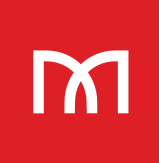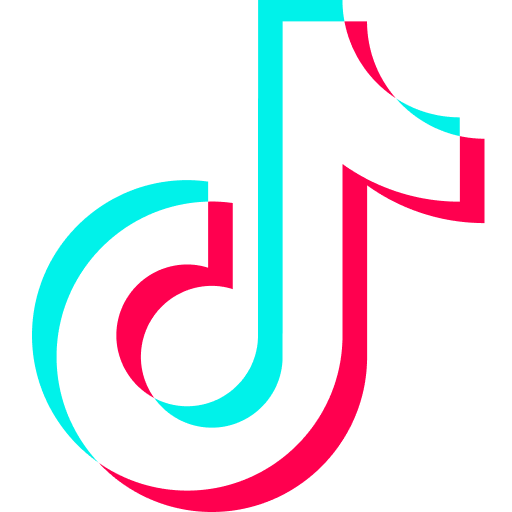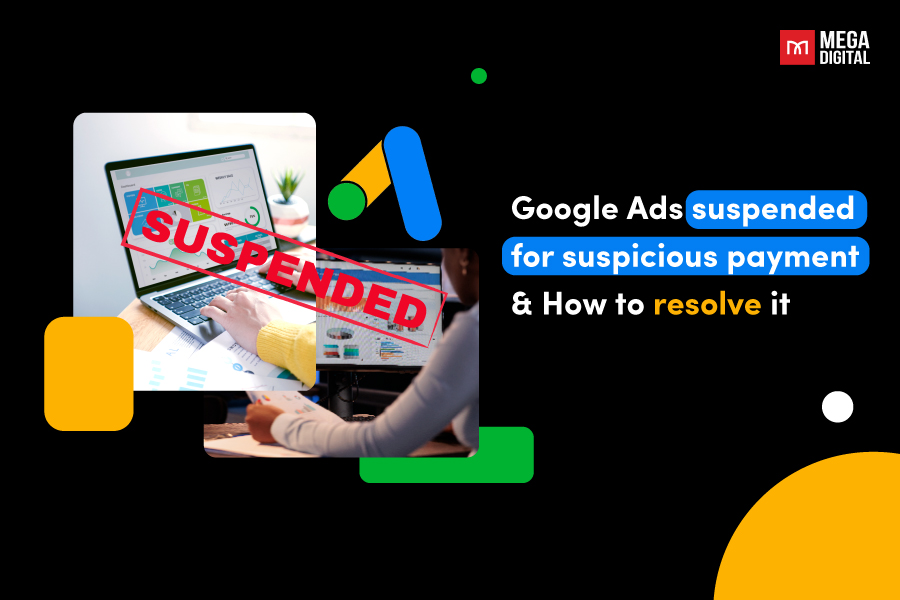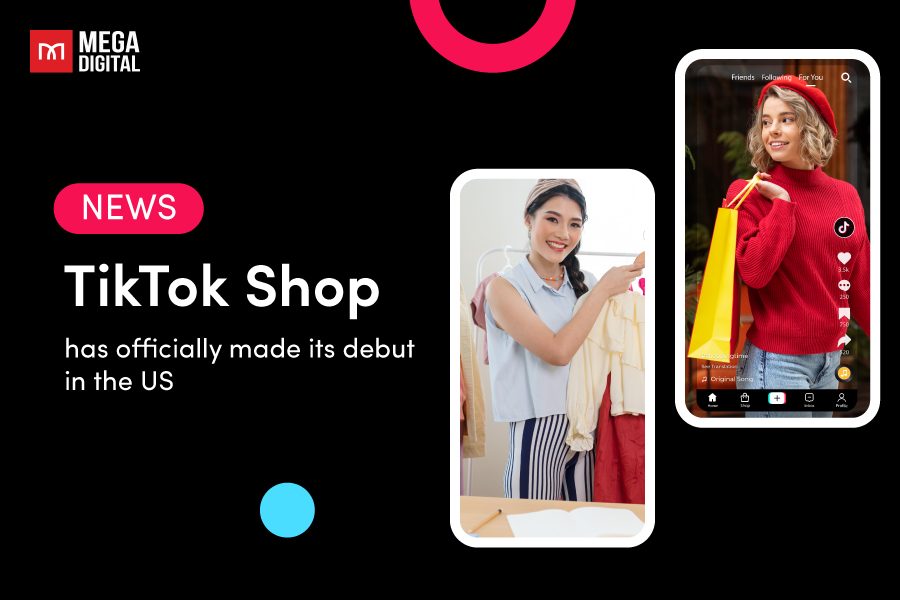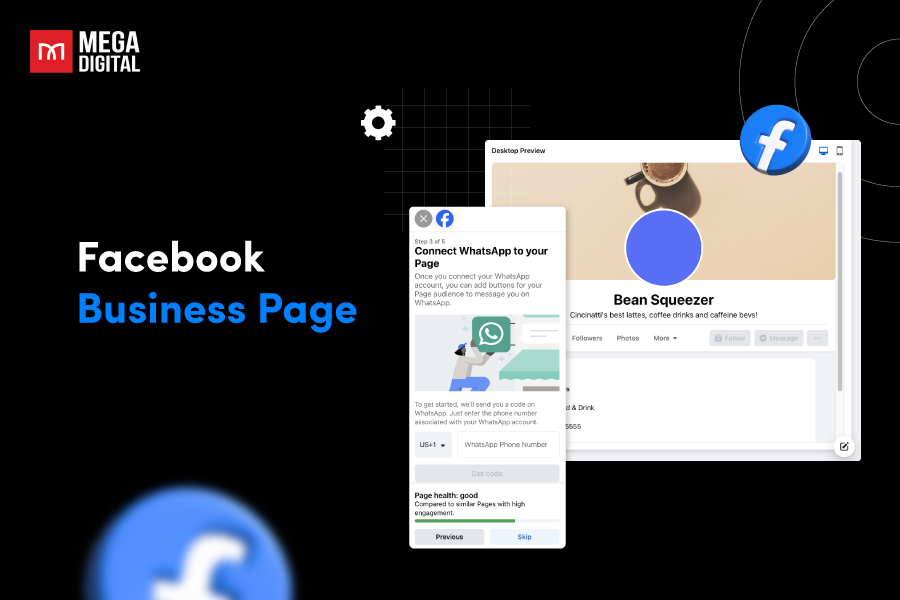CTR (Click through rate) is one of the most important metrics that advertiser will use to analyze the performance of the advertising campaign. However, what is good Facebook Ad CTR? And how you can enhance it? In this article, I’ll address these inquiries and share with you some exclusive expert tips that we apply it for more than 10k+ campaigns we use for our clients.
Contents
What is CTR in Facebook Ads?
Facebook Ad CTR (or click-through rate) is a metric that measures the number of clicks an Facebook ad receives relative to the number of times it was shown (impressions).
How Do You Calculate Facebook Ad Click-Through Rate?
To calculate the click-through rate (CTR) for Facebook, you need to divide the number of clicks your post receives by the number of impressions it generates, and then multiply the result by 100 to express it as a percentage.
The formula for calculating Facebook CTR is as follows:
CTR = (Clicks / Impressions) * 100
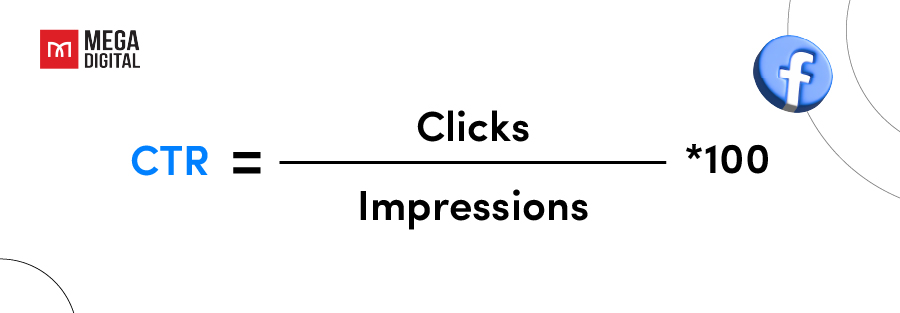
Types of CTR of Facebook Ad CTR
Facebook Ads has different types of goals when setting up the campaign. Therefore, they categorized the click-through rate metric into different types based on where they lead the user. Here are 3 types or variations of Facebook Ad CTR:
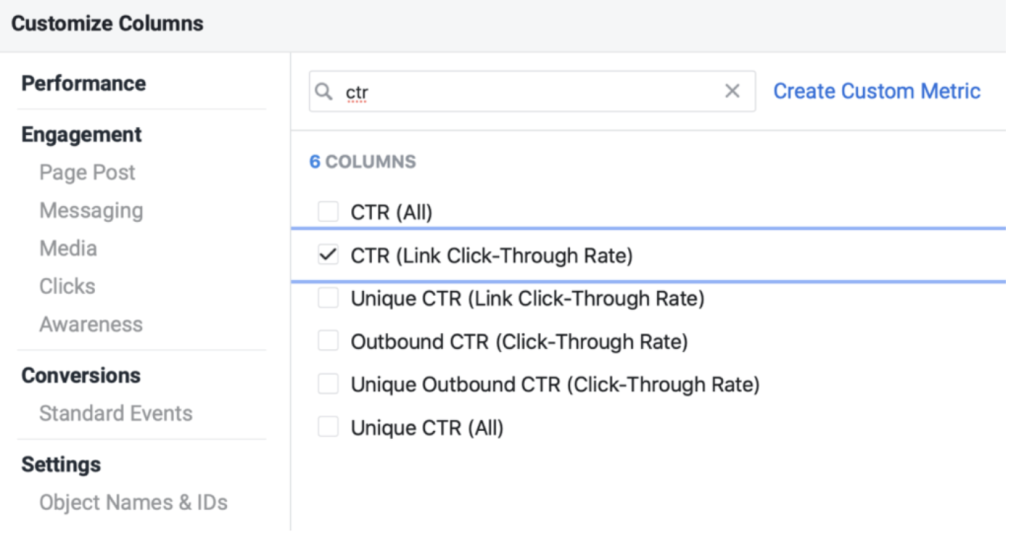
Facebook Link Clicks
This metric is commonly examined by marketers when assessing their Facebook ads. It refers to clicks from users who navigate to or from Facebook. This includes:
- Clicks on call-to-action buttons or images
- Clicks leading to opening a lead generation form or Instant Experience ad
- Clicks on links within the ad copy
Facebook Clicks (all)
This metric can be confusing for many. Clicks (all) include any click on any part of your Facebook ad. In addition to actions covered by link clicks, it also includes:
- Clicks on your Facebook or Instagram page name
- Social interactions such as likes, comments, and shares
- Clicks to expand photos or videos
Facebook Outbound Clicks
Outbound clicks track clicks on ads that redirect users away from Facebook, unlike the link clicks metric, which encompasses clicks to properties both on and off Facebook, such as instant experiences, lead ad forms, and collections.
In measuring an ad’s efficacy in driving traffic away from Facebook, outbound clicks may offer a more accurate depiction compared to link clicks. However, it’s worth noting that landing page views would also capture users who clicked the link and waited for the landing page to load.
What is The Average Click Through Rate of Facebook Ads?
Average CTR of Facebook Ads by Industry
Firstly, it’s essential to grasp the overall landscape of Facebook ad CTRs. Across all industries, the average Facebook CTR hovers around 0.90%. However, this figure serves as a baseline, and actual performance can deviate significantly based on industry standards.
- High Performers are industries that have CTR over 1.30%, such as Legal Services (1.61%), and Retail (1.59%).
- Mid-Range are industries that have CTR from 0.90% to 1.30%, such as Beauty (1.16%) and Apparel (1.24%).
- Lower CTRs are industries like customer service (0.62%), education (0.73%).
Average CTR of Facebook ads by Ad Formats
Moreover, the choice of ad format plays a pivotal role in determining CTR. Here’s how different formats influence CTR:
| Interactive Ads | 1.25% – 1.33% CTR |
| Video Ads | 0.50% – 0.73% CTR |
| Carousel Ads | 0.30% – 0.85% CTR |
Takeaway:
It’s no surprise that interactive ads (include polls, quizzes, or product exploration) lead the pack in terms of click-through rates (CTR), ranging from 1.25% to 1.33%.
Following closely behind are video ads, with CTRs starting at 0.50% and going up to 0.73%. Interestingly, carousel ads are suitable to e-commerce businesses who want tp showcase multiple products or services, offering a broader view. So they have the potential for even higher CTRs, maxing out at 0.85%, despite starting a bit lower at 0.30%.
These ads captivate viewers with visually stimulating imagery, while the interactive element of carousel ads, with its swiping motion, encourages users to delve deeper and interact with multiple slides.
What is Good Facebook Ad CTR?
What exactly is a “good” CTR on Facebook Ads?
This question can be tricky, as the answer depends on several factors. However, if your Facebook Ad CTR is higher than your average industry’s CTR (check average CTR by Industry above), your CTR will be called “Good”.
For example, your company’s industry is Finance & Insurance, and your Facebook CTR is 0.85%. Although this CTR is lower than the Facebook CTR average of all industries (0.9%), it is higher than the average CTR for Facebook ads in your industry (0.56%). So, we can say that your CTR is a good click through rate for Facebook ads.
How to Increase CTR Facebook Ads Effectively?
Increasing the Click-Through Rate (CTR) of your Facebook ads requires a combination of strategic planning, creative content, and continual optimization. Here are some effective strategies to boost your Facebook ad CTR:
#1. Create Engaging Ad Copy
Creating engaging content requires understanding your audience, crafting compelling narratives, and delivering value. Here are some tips to help you create engaging content:
Keep Facebook Ad Copy Short
When it comes to Facebook ad copy, shorter tends to be sweeter for engagement and click-through rates (CTRs).
Why you should do
Shorter ad copy simplifies the decision-making process by presenting less information for readers to process, facilitating quicker decisions.
On average, Facebook posts are about 157.7 characters long, with user posts typically shorter at 121.5 characters and mobile posts even briefer at 104.9 characters. Posts ranging from 120 to 139 characters were found to be 13.3% more engaging than those with 140 to 159 characters.
How to do
- Grab attention in the first line about 80-119 characters
- Briefly showcase the most compelling benefits of your product or service.
- End with a strong call to action.
Example
Lylt is a perfect example. Their caption is short and emphasizes the unique benefits of their service.

Create FOMO and Urgency
Eventbrite’s study revealed that 69% of millennials experience FOMO (Fear of Missing Out) when unable to attend events their friends are attending. This fear of being left out can be leveraged by both B2C and B2B marketers to create compelling ad campaigns.
Why you should do
Utilizing FOMO and urgency in your Facebook ad copy can significantly boost click-through rates (CTRs) and drive conversions.
How to do
- Promote a limited-time offer
- Set a specific time frame
- Communicate limited availability
Example
Groupon effectively employs urgency and FOMO in their Facebook ad by offering a limited-time promotion code. This encourages potential customers who may have hesitated due to costs to take immediate action.
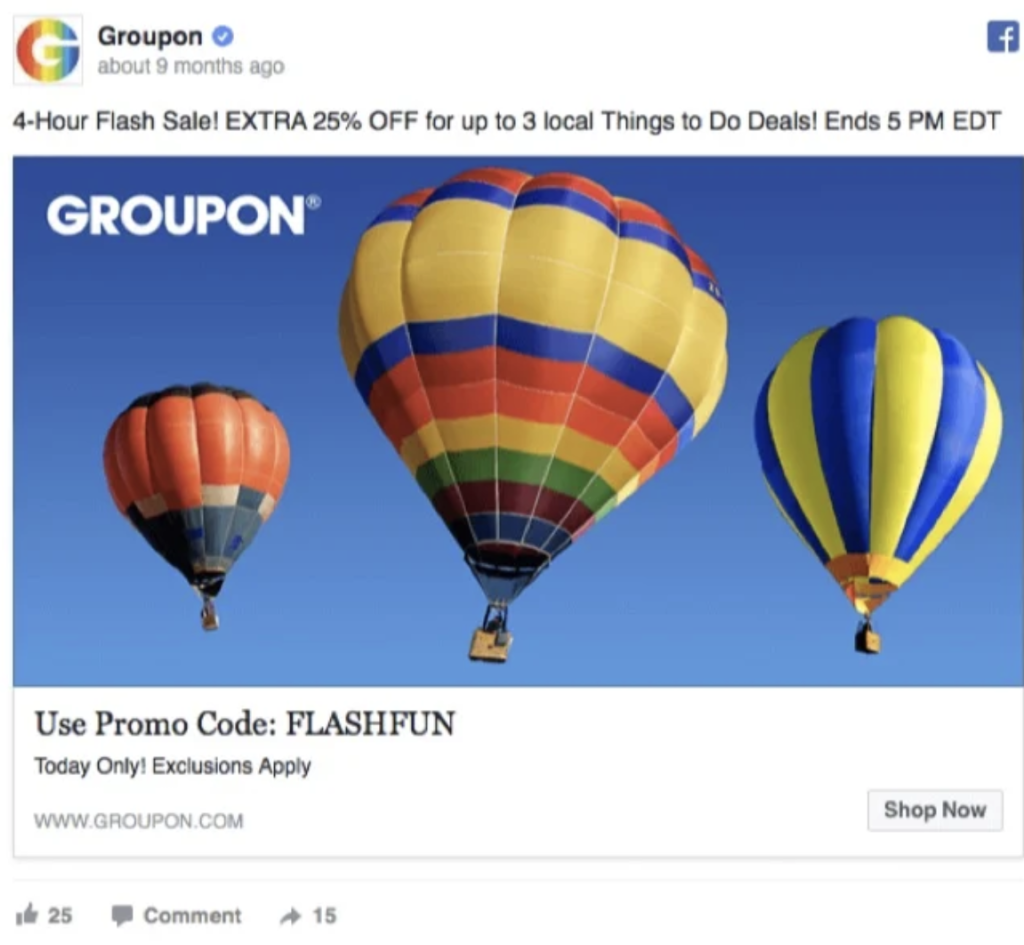
Offer Free Gift
Offering something for free can indeed be a powerful strategy to increase click-through rates (CTRs) in your Facebook ads.
Why you should do
- A free gift adds value and entices them to click and learn more about what you’re offering.
- Offering something for free can be seen as a gesture of goodwill, fostering trust and encouraging clicks.
How to do
- Offer a free gift relevant to your product or service.
- Briefly explain what users need to do to claim the free gift
Example
Ant Built offers a free gift for a limited time. This approach allows potential customers to experience your product or service firsthand, potentially leading to subscription renewals or purchases down the line.
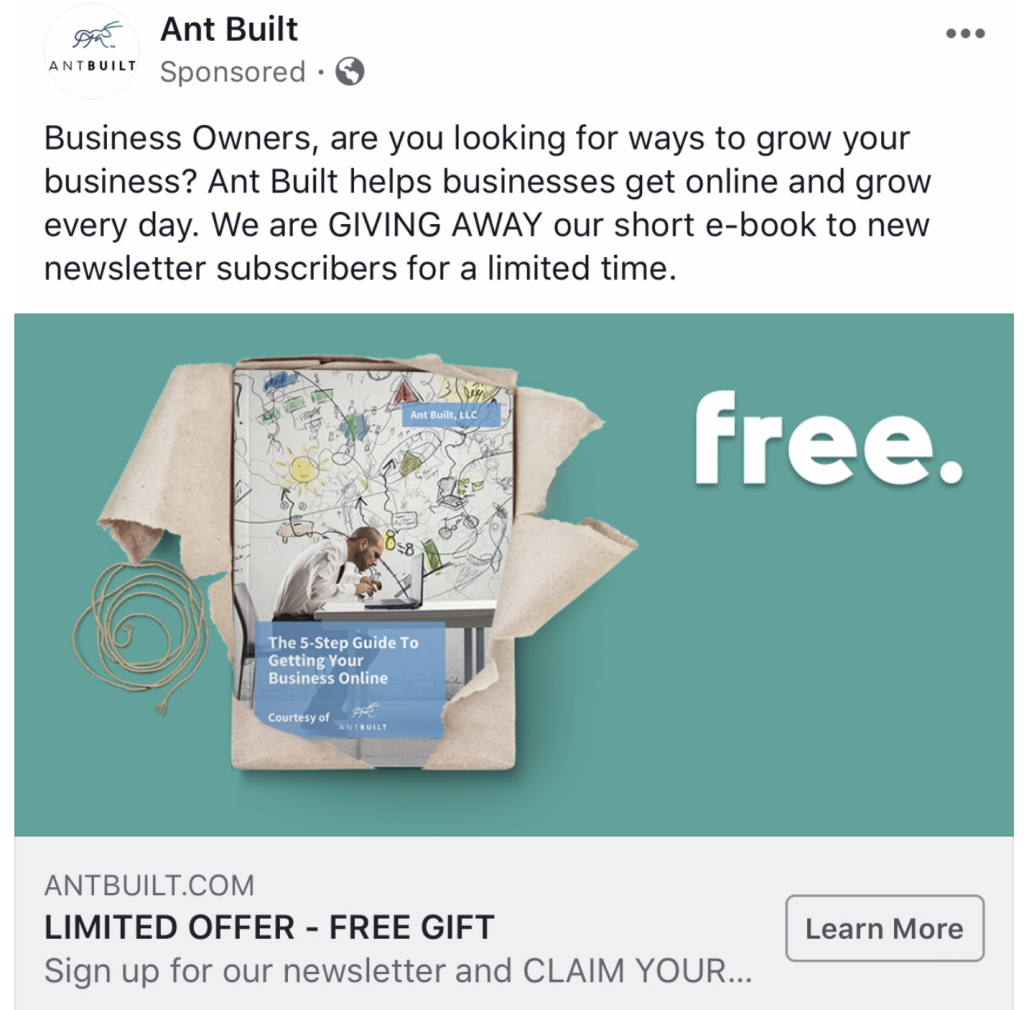
Prize giveaways
Prizing giveaways can be incredibly effective in Facebook advertising.
Why you should do
People are naturally drawn to the chance of winning something valuable. This excitement motivates them to click and learn more about the giveaway.
How to do
- Showcase the prize prominently in your ad visuals and clearly communicate its value.
- Outline easy-to-understand steps for entering the giveaway.
- Set a clear timeframe for the giveaway, creating a sense of urgency and encouraging clicks.
Example
Unrefined Bakery Frisco launched a Facebook ad campaign that included a Chocolate Cake. This approach not only captures attention but also incentivizes participation and sharing among users.

Use emojis to grab attention
Emojis can be a powerful tool for catching attention and adding visual emphasis to your ad copy.
Why you should do
Each emoji represents a specific benefit, making the content more engaging and accessible, even across language barriers.
How to do
- When using emojis in your ads, ensure they complement your messaging and resonate with your audience.
- Furthermore, emojis should align with your brand personality and add value to your copy.
Example
Take a look at how Buffy effectively uses emojis to highlight benefits in their Facebook ad.

#2. Enhance Ad Creative
They are the bread and butter of grabbing attention in the fast-paced world of Facebook ads. Here are some key methods to consider when creating visuals that will stop the scroll and get users to engage with your ad:
Create a captivating Facebook ad design
Why you should do
Facebook ad design requires a balance of compelling copy and eye-catching visuals.
How to do
For inspiration, explore a variety of successful Facebook ad examples to see how other brands effectively combine copy and design to drive engagement and conversions.
Use contrasting and vibrant colors
Vivid colors immediately capture attention and make your ad stand out from the rest.
Why you should do
Ads with contrasting color combinations often boast higher click-through rates (CTRs) by grabbing users’ attention more effectively.
For example, red is often associated with passion and danger, while blue can represent calmness and trust. By understanding the psychology of color, you can use contrasting and vibrant colors to create a design that resonates with your target audience.
Example
Pairing unbeatable ad copy with striking ad design, like ModCloth does in the example provided, can further amplify the impact of your ad.
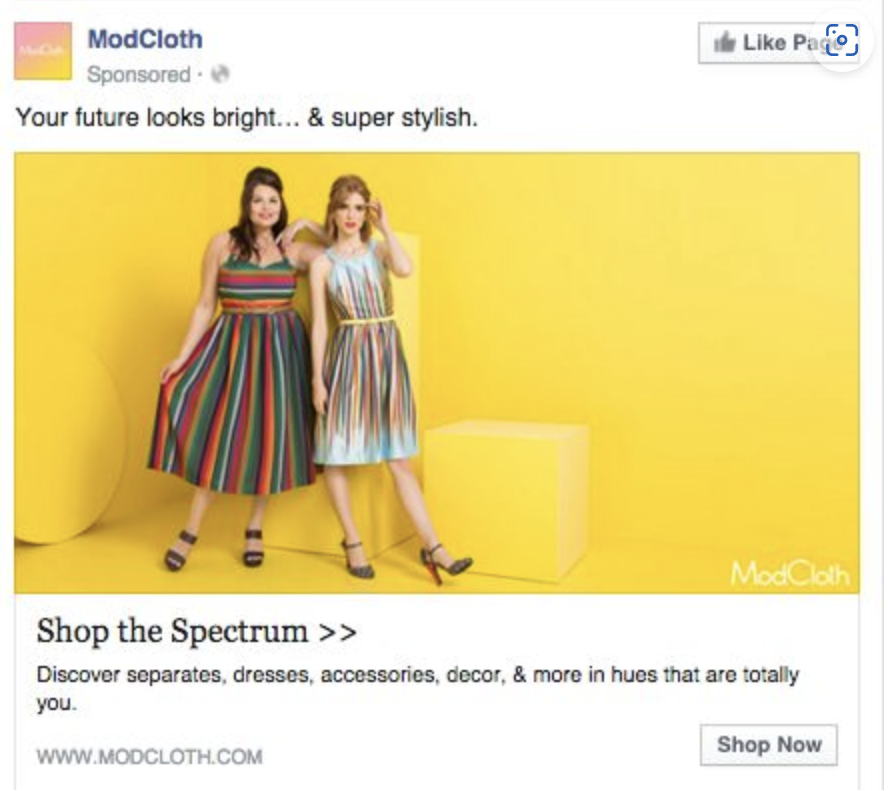
Stand Out Key Objects
One effective strategy is to utilize line and color separators to create visual distinctions between the products.
Why you should do
- Make the imagery more manageable and easier for viewers to navigate.
- Maintain a cohesive visual aesthetic while highlighting the unique features and benefits of each item.
How to do
- Use Contrasting Colors to grab attention against the background of your ad.
- Keep it Simple to avoid cluttering your ad with too many elements. Let the SOKO object shine.
- Tell a Story (Optional): Use the SOKO element as a starting point to tell a brief story within your ad that further engages viewers and reinforces your brand message.
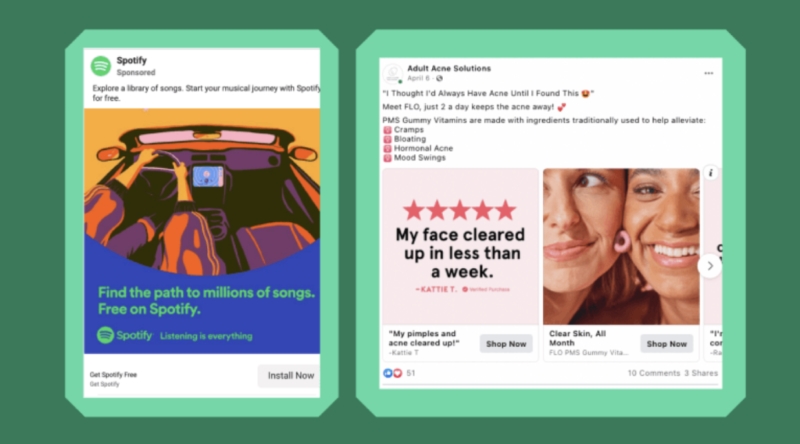
#3. Retarget website visitors
Website visitors who have already shown some interest are more likely to click on your retargeting ads.
Why you should do
Retargeting keeps your brand top-of-mind for potential customers. It also
increase the chance they’ll click to learn more.
How to do
To do this, you’ll need to install Facebook Pixel on your website to record audience activities (website visits, ad clicks, etc.)Then, you can create a custom audiences which record the data of user had clicked to the previous ads.
After that, all you need is to run another ad with the target setting of your Custom Audience. You also can reach new audience by setting up a Lookalike audience based on your current Custom Audience.
How to Evaluate & Optimize Facebook Ad CTR
Evaluating and optimizing your Facebook Ad CTR (Click-Through Rate) is crucial for getting the most out of your ad campaigns. Here are 2 cases you should note to achieve this:
Case 1: CTR Decrease & CPM Unchanged
This indicates that the ads are still reaching customers, but the content is no longer captivating enough to attract the attention of potential customers.
Solution:
- Add more diverse content and images (banners) to the post to allow the platform to distribute the best content.
- Increase the viral effect (social proof):
- Seeding the post more
- Maintain interaction with customers through comments
- Improve customers service after landing page/messenger chat
- Allocate more to similar targets:
- Run additional engagement campaigns or message campaigns. This will help machine learning understand the behavior of the audience interacting with the post.
Case 2: CPM Increase & CTR Unchanged
This suggests that the audience or ad content has reached saturation. The display of ads to users is increasingly restricted compared to before.
Solution:
- Expand the audience to run mass campaigns without limiting audience interests or expand remarketing if sufficient data is available.
- Run additional reach campaigns to increase awareness and reduce CPM to support the main campaign.
Furthermore, you should still focus on the main optimization goals, such as:
- Sales: If key metrics such as orders, conversion rates, and ROAS are good, then there may not be a need to pay attention to CTR and CPM. Alternatively, if you still want to optimize these metrics, allocate a small budget for testing.
- Engagement: Key metrics will play a central role here, such as cost per engagement (CPE), link clicks, reactions, and comments. Therefore, CTR and CPM serve as secondary metrics. In cases where engagements are already good (posts receive genuine interactions like shares), expanding the audience to reduce CPM may lead to ads reaching non-target audiences, reducing interaction quality.
Final word
I hope that this post has helped you know more clearly about CTR of Facebook Ad, how to evaluate and optimize it in detail. However, if you still struggling in doing CTR Facebook Ad Optimization, don’t hestiate to drop a message by clicking the button below. Our agents will reach out and consult your case personally.
